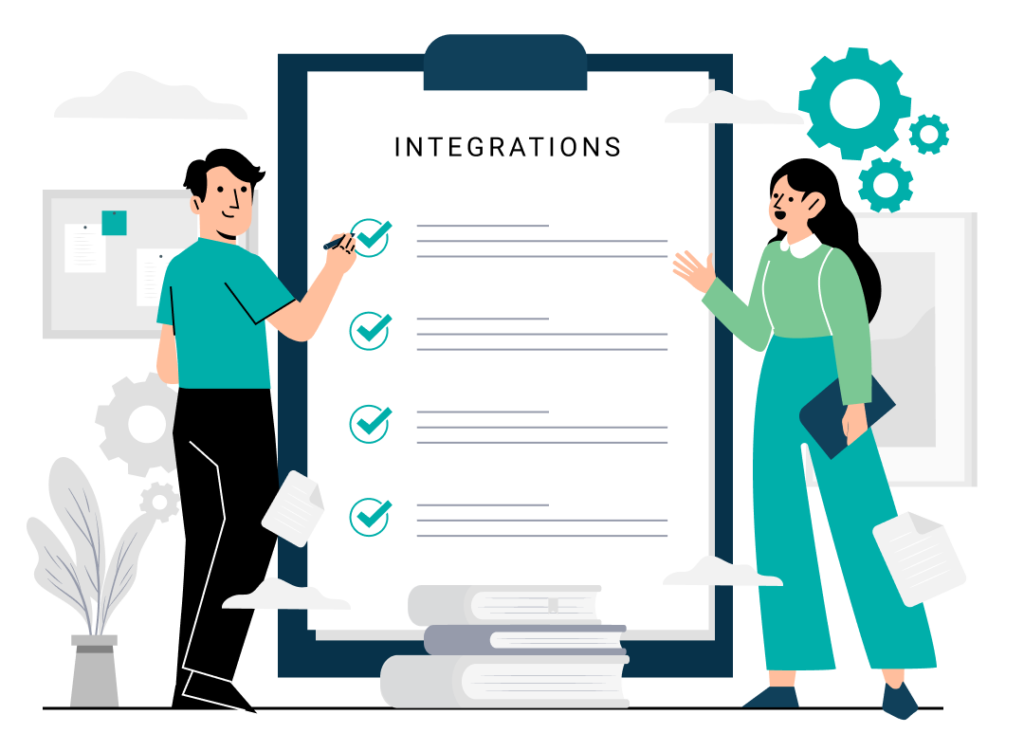Your AI project’s success isn’t going to be determined by which machine learning model you choose or how clever your algorithm is. It’s going to come down to something far more fundamental: whether your data is actually ready for AI.
Most organisations jump straight into deploying models and AI tools without sorting out the underlying infrastructure. They skip the boring stuff – the data foundations that actually make AI work. Then they wonder why their models produce inconsistent results, why their data scientists spend 80% of their time cleaning data, or why their AI initiatives stall out after the proof-of-concept phase.
Smart data foundations fix this problem by turning raw information into AI-ready assets with enhanced metadata, established lineage tracking, verified quality processes, and optimised architectural components. This comprehensive guide is part of our Building Smart Data Ecosystems for AI framework, where we explore the complete strategic approach to AI-ready data transformation for technology leaders.
Here’s what modern AI systems actually need: data that’s discoverable, trustworthy, and immediately available for both training and inference workflows. This means quality management that actually works, automated lineage tracking, rich metadata systems, and architectural foundations that support real-time processing capabilities.
Get these core components right and you’ll make informed data architecture decisions for AI readiness that position your organisation for AI success rather than costly technical debt later on.
What exactly constitutes “smart data” in the context of an AI ecosystem?
Smart data is what happens when you take regular data and make it actually useful for AI systems. It’s data with rich metadata, established lineage, verified quality, and AI-optimised formats that go far beyond just storing information in a database somewhere.
The difference comes down to automated enrichment. Instead of dumping raw data into storage and hoping for the best, you transform that information into machine-readable assets with contextual relationships and semantic understanding. Regular databases just store stuff. Smart data tells you what that stuff means, where it came from, and how AI models should interpret it.
Think about it this way: when your AI system needs to find relevant datasets, it shouldn’t require a data scientist to spend three weeks hunting through file systems and asking around the office. Business-friendly search capabilities mean anyone can discover what data exists and whether it’s suitable for their AI use case.
Quality becomes embedded throughout the data lifecycle rather than being a cleanup job you do later. Schema enforcement technologies validate input structures upfront, acting as gatekeepers that prevent poor-quality data from getting into AI workflows in the first place.
Integration with governance frameworks ensures you meet compliance requirements while keeping data useful for AI applications. The analytics readiness bit ensures AI models and analytics tools can access clean, trusted, and explainable data sources without compromising governance requirements.
Real-time processing capabilities separate smart data from traditional batch-oriented approaches. This makes streaming ingestion and real-time quality monitoring required components, not nice-to-have features.
How does data lineage tracking enable trustworthy AI model development?
Data lineage gives you complete visibility into data flow from source systems through transformations to AI model consumption, which is what creates transparency and builds trust in AI outputs.
This becomes incredibly valuable when you’re trying to figure out why your model suddenly started behaving differently or investigating biased outcomes. Lineage information is key for ensuring trust in AI model output and helps in faster root cause analysis when unexpected outcomes occur. Instead of your data team spending weeks playing detective, they can trace the exact path of data to identify changes in source systems or transformation logic.
Impact analysis becomes possible when data sources change or need updates. When you make changes to a data pipeline, lineage lets you run impact analyses to understand downstream effects before you implement modifications. No more surprises.
Regulatory compliance depends heavily on demonstrating data provenance and transformation processes. Data lineage provides the visibility you need to establish compliance, making it easier to respond to audits and regulatory inquiries with concrete documentation rather than hand-waving.
Model reproducibility relies on understanding exactly which data versions were used for training. Since lineage tracks data versions, it helps reproduce model results and lets organisations revert to previous model states while troubleshooting.
What metadata management practices make data discoverable and trustworthy for AI teams?
Metadata capture provides context, meaning, and structure to raw data assets. It lets users across your business discover, understand, and trust data through automated and manual enrichment processes.
Technical metadata covers schemas, data types, relationships, and storage locations. Business metadata adds semantic context through descriptions, business rules, ownership information, and usage guidelines. Operational metadata tracks access patterns, update frequencies, performance metrics, and quality scores that inform data reliability assessments.
Automated tagging and classification systems reduce manual overhead while ensuring consistency across data catalogues. AI analyses patterns in usage, lineage, and access to enrich metadata with minimal manual effort. This automation scales metadata management as data volumes grow.
Business glossaries and semantic layers bridge the gap between technical data structures and business understanding. These standardised definitions ensure different teams interpret data consistently, which reduces misunderstandings that lead to incorrect model assumptions.
Rich metadata helps identify and address biases, debug edge cases, and uncover gaps in training data by providing context about data collection methods.
Which data quality frameworks ensure AI model reliability and performance?
Data quality assessment examines data for accuracy, completeness, consistency, timeliness, and uniqueness to establish baseline reliability standards for AI applications.
Accuracy measurement involves validating data against known correct values or business rules to identify errors that could mislead model training. Completeness assessment identifies missing values and determines whether gaps follow patterns that might introduce bias. Consistency checking ensures data formats and values align across different sources and time periods.
Automated quality monitoring provides continuous assessment rather than point-in-time checks. These systems generate alerts when quality metrics fall below acceptable thresholds, letting teams address issues before they impact model performance. Rigorous data integration and preprocessing standards help mitigate data consistency issues by catching problems during ingestion.
Quality scoring systems provide objective measurement that lets teams prioritise improvement efforts based on business impact. These scores help organisations track progress over time and make informed decisions about which datasets require immediate attention.
Integration with data pipelines ensures quality gates prevent degraded data from reaching production systems. APIs use schema enforcement technologies such as JSON Schema and OpenAPI to specify and validate input structures as automated validation checkpoints.
What are the required architectural components of AI-ready data ecosystems?
Modern data architecture combines data lakes for raw storage with data warehouses for structured analytics to support diverse AI workload requirements across batch and real-time processing scenarios.
Data lakes provide the flexibility to store unstructured and semi-structured data in native formats. This matters for AI applications that need diverse data types including text, images, and sensor data. This storage approach preserves data fidelity and enables future use cases that weren’t anticipated during initial collection.
Stream processing capabilities enable real-time data ingestion and immediate availability for AI inference workflows. High-performance analytics engines enable real-time model scoring, large-scale data transformation, and parallel processing required for responsive AI systems.
API layers provide standardised access patterns that decouple data consumers from underlying storage systems. This abstraction lets teams evolve storage technologies without disrupting existing AI applications. Seamless integration ensures interoperability across APIs, event streams, and reverse ETL tools for data access.
Orchestration platforms coordinate complex data flow and ensure reliable pipeline execution across distributed systems. These platforms manage dependencies, handle failure recovery, and provide monitoring capabilities that maintain data pipeline reliability.
How do you implement master data management for consistent AI training datasets?
Master data management creates authoritative, unified records across enterprise systems to eliminate data inconsistencies that could introduce noise or bias into AI model training processes.
Record matching and merging processes identify duplicate entities across different source systems using probabilistic algorithms that compare attributes like names, addresses, and identifiers. These algorithms examine datasets for duplicates by comparing content across records, with duplicate entries removed leaving only one authentic copy while preserving references to maintain data integrity.
Golden record creation establishes single, authoritative versions of entities that serve as the foundation for AI model training. These records combine the best available information from multiple sources, applying business rules to resolve conflicts and ensure accuracy. Golden records provide consistency across different AI applications and prevent models from learning contradictory information about the same entities.
Version control and change management track modifications to master data over time, letting teams understand how entity definitions evolve and preventing data drift that could impact model performance. Data integration platforms designed with data products as the base premise help organisations become AI-ready without much additional effort by treating master data as versioned, documented assets.
What data governance policies support compliant AI development while enabling innovation?
Balanced governance frameworks establish policies without creating bureaucratic barriers to AI experimentation through risk-based approaches that differentiate between exploratory and production AI use cases.
Access controls and privacy protection ensure sensitive data usage complies with regulatory requirements while enabling legitimate business applications. Enterprise-wide data stewardship roles should be defined with clear understanding of who owns each dataset, who can access it, and for what purposes to maintain accountability without stifling innovation.
Data classification and handling policies guide appropriate usage of different data types in AI contexts based on sensitivity levels and regulatory requirements. Ensuring compliance with laws like GDPR, HIPAA, or other data regulations is a key part of readiness for organisations operating in regulated industries.
Audit trails and documentation support compliance reporting while enabling data team accountability through automated logging of data access, transformation, and usage patterns.
Ethical guidelines establish frameworks for addressing fairness, transparency, and accountability in AI development processes. Techniques like differential privacy or federated learning allow AI models to learn from data without exposing individual data points, enabling innovation while protecting privacy through technical controls.
How do you assess and improve your organisation’s AI data readiness?
Assessment frameworks provide structured assessment tools and criteria to guide the evaluation process across areas including data quality, technology infrastructure, governance maturity, and team capabilities.
Current state evaluation examines existing data assets, infrastructure capabilities, and organisational processes to establish baseline measurements. Organisations conduct evaluations across data quality, technology infrastructure, governance, skills, and ethical standards using standardised criteria that enable objective comparison against industry benchmarks.
Scoring methodology provides objective measurement through maturity models that categorise readiness stages from initial awareness to full AI integration. Many frameworks include maturity models or scorecards that categorise readiness stages, from initial awareness to full AI integration.
Gap analysis identifies specific improvement areas by comparing current capabilities against requirements for planned AI use cases. A structured assessment helps avoid pitfalls by breaking the concept of AI readiness into tangible components and questions that guide prioritised investment decisions.
Maturity roadmaps guide organisations through progressive capability development stages based on their current state and target objectives. Data readiness remains a top bottleneck, with many companies lacking seamless integration and consistent governance across their data ecosystems.
FAQ Section
What’s the difference between a data lake and a data warehouse for AI applications?
Data lakes store raw, unstructured data in native formats – perfect for AI model training that needs diverse data types like text, images, and sensor data. Data warehouses provide structured, processed data that’s been optimised for analytics and reporting, which makes them better suited for business intelligence than machine learning applications.
How much should SMBs budget for smart data foundation implementation?
You’re looking at $50K-$200K for initial setup, depending on your current state and requirements. Cloud-native solutions reduce upfront costs while giving you enterprise capabilities. The smart approach is phased implementation where you demonstrate value incrementally rather than trying to build everything at once.
Can existing data systems be transformed into smart data foundations?
Absolutely. You can modernise through approaches that preserve existing investments while adding smart capabilities. Start with data cataloguing and quality assessment, then gradually implement lineage tracking and governance processes. You don’t need to rip and replace everything.
What are the most common mistakes when building data foundations for AI?
The big ones are neglecting data governance early, underestimating data quality requirements, choosing overly complex architectures, and failing to involve business stakeholders in metadata definition. Start simple and evolve based on actual AI requirements rather than theoretical perfect architectures.
How long does it typically take to establish a smart data foundation?
Initial implementation takes 3-6 months for basic capabilities, with full maturity requiring 12-18 months depending on your data volume and organisational complexity.
What skills do teams need to manage smart data foundations?
Core skills include data engineering, data governance, quality management, and basic AI/ML understanding. Many organisations succeed by upskilling existing database administrators and data analysts rather than hiring entirely new teams.
How do you measure the success of smart data foundation investments?
Key metrics include data quality scores, time-to-insight for AI projects, compliance audit results, and data discovery efficiency. Business metrics like AI model performance and deployment velocity provide tangible ROI measurement.
What’s the relationship between smart data and MLOps?
Smart data foundations provide the reliable, quality data that MLOps processes depend on for consistent model performance. Data lineage supports model reproducibility, quality monitoring prevents model degradation, and governance ensures compliant model deployment.
How do cloud platforms simplify smart data foundation implementation?
Cloud platforms provide pre-built services for data cataloguing, quality monitoring, and pipeline orchestration that reduce implementation complexity. Managed services handle infrastructure scaling and maintenance automatically, letting teams focus on business value rather than infrastructure management.
What regulatory considerations affect smart data foundation design?
GDPR, CCPA, and industry-specific regulations impact data retention policies, access controls, and audit requirements that must be built into foundation architecture. Build privacy-by-design principles into foundations and ensure data lineage supports regulatory inquiries about data usage and processing activities.
Conclusion
Smart data foundations represent the backbone of successful AI initiatives. They transform raw information into reliable, discoverable, and compliant assets that enable innovation while managing risk. The components we’ve explored – from metadata management and lineage tracking to quality frameworks and governance policies – work together to create an ecosystem where AI applications can thrive.
The investment in these foundations pays dividends through improved model performance, faster development cycles, and reduced compliance risks. Rather than viewing data infrastructure as a technical necessity, treat it as a strategic asset that enables competitive advantage through AI capabilities.
For a complete overview of how these foundations integrate with architectural decisions, operational frameworks, and organisational transformation, explore our comprehensive Building Smart Data Ecosystems for AI resource.
Start with assessment to understand your current state, then implement improvements based on your specific AI use cases and business requirements. The organisations that invest in smart data foundations now will be positioned to capitalise on AI opportunities, while those that skip these fundamentals will find themselves rebuilding infrastructure under pressure later.












